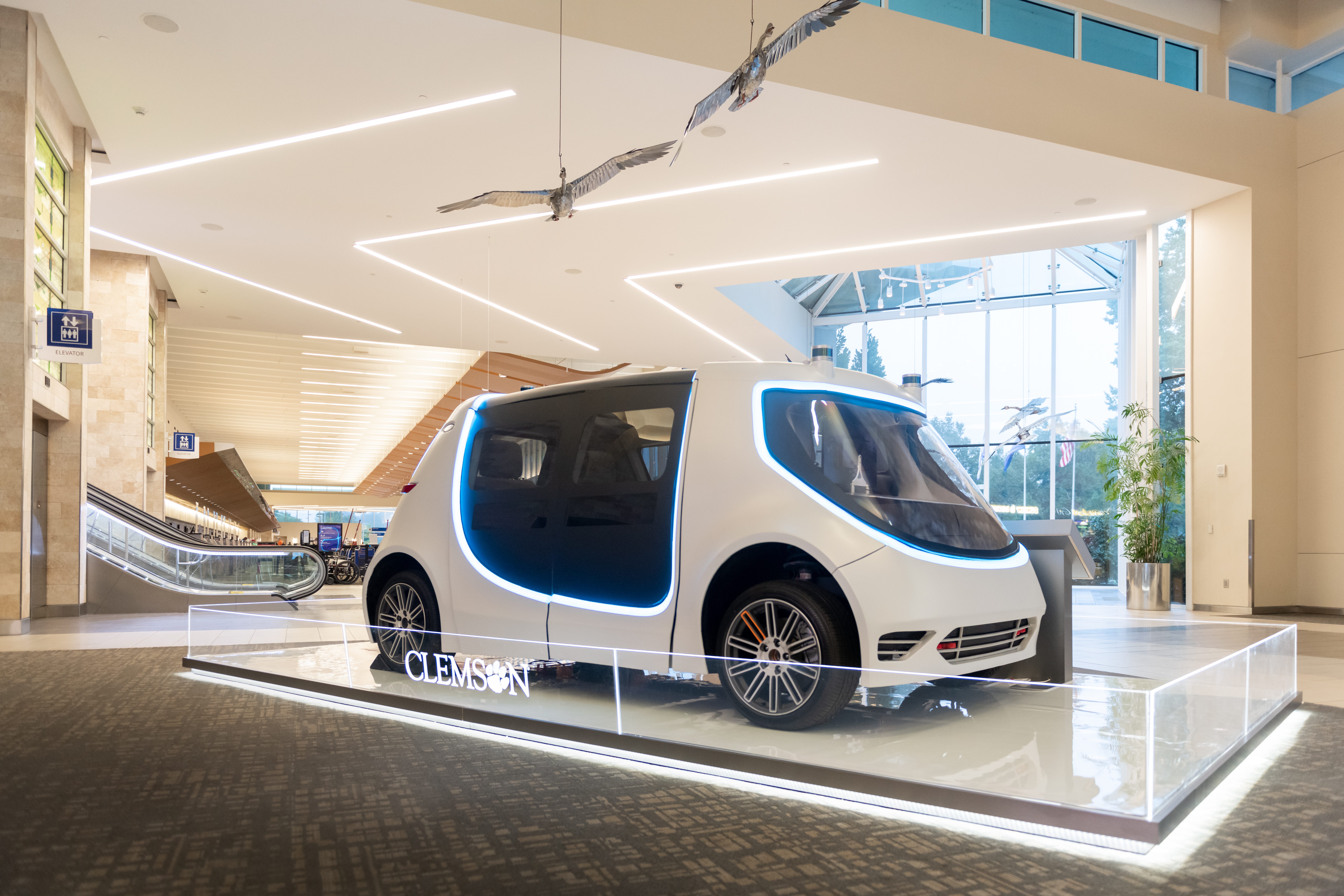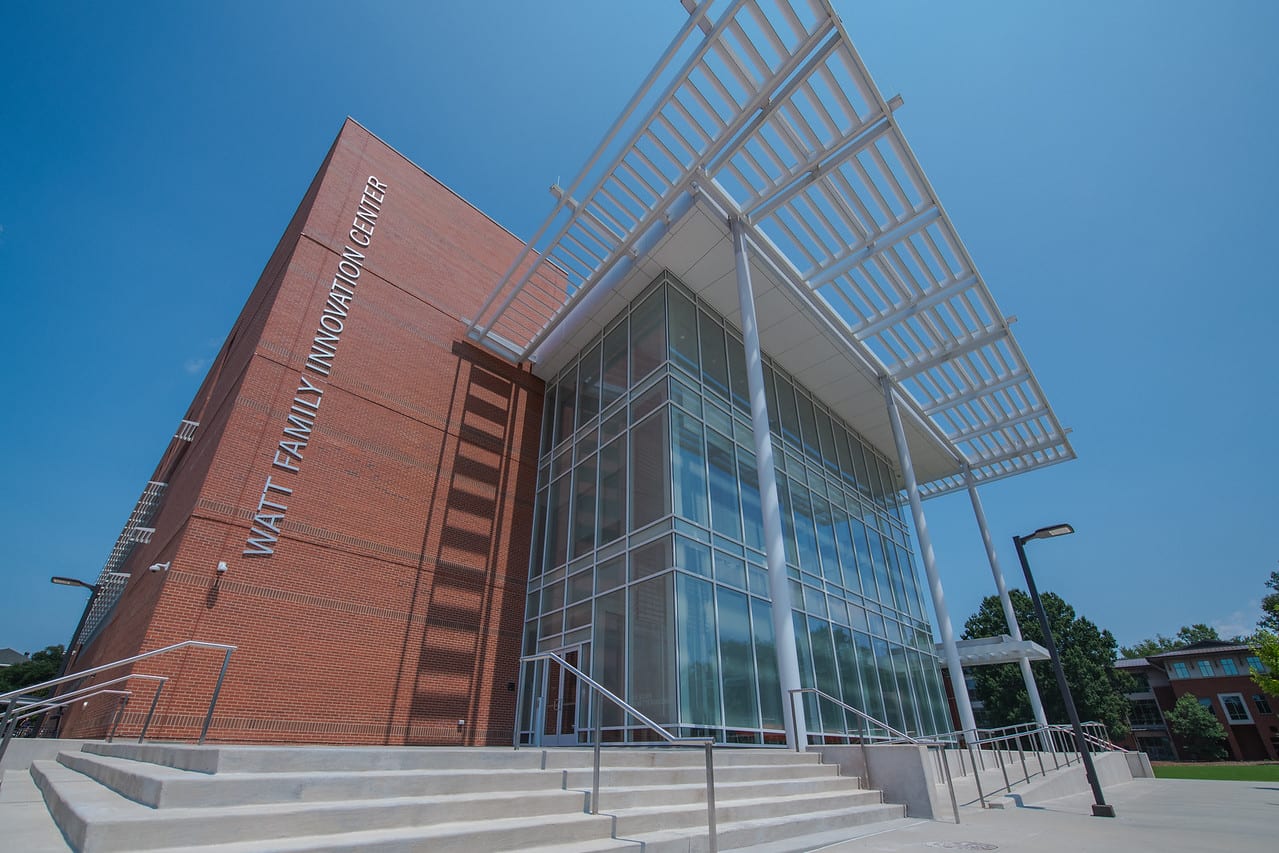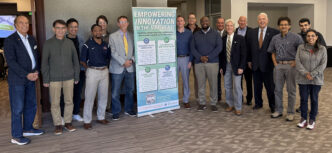Creating innovations for the future and driving advancements in mobility requires a workforce of dedicated engineers, designers and creators passionate and knowledgeable about our industry. That’s why Ford teamed up with Deep Orange, a student-driven vehicle prototype program within the Department of Automotive Engineering. Housed at the University’s International Center for Automotive Research (CU-ICAR), the two-year master’s program empowers students to design and build fully-functional concept vehicles from the ground up.
For the program’s tenth iteration, the students designed the University’s first self-driving electric vehicle prototype for passengers. Throughout the project, Ford’s role was to guide and advise students. The student team’s hard work resulted in an inventive prototype: a self-driving, battery electric vehicle experience with human-centered design at the forefront.
Built from the ground up
To bring this autonomous vehicle to life, the students started from the ground up to imagine use cases for self-driving vehicles. Using the human-centered design lens, the students focused on: giving time back to families during a commute or while traveling; connecting college students who might not have a vehicle; and maximizing productivity for business professionals on the go. Driven by these personas, the final design features a vehicle experience focused on passenger comfort and intuitive controls.
- Spacious ride: For use as a personal vehicle, the interior feels like a living room on wheels, with seats facing each other, low floor clearance and sliding swing-out doors for maximum accessibility. The team also envisioned a semi-transparent display screen on the windshield to show navigation and entertainment options.
- Touchless experience: With intuitive controls like voice and gesture commands, a rider can direct the vehicle to make a decision. For example, by pointing to a parking space or by voicing a direction, the car could self-navigate to the indicated destination. This could be extremely helpful in a post-COVID world, minimizing contact with high touch surfaces.
- Passenger comfort: The team also wanted to gauge passenger comfort via wearable devices that detect any passenger discomfort and modify the car’s driving behavior such as speed and driving style to mitigate discomfort for things like motion sickness.
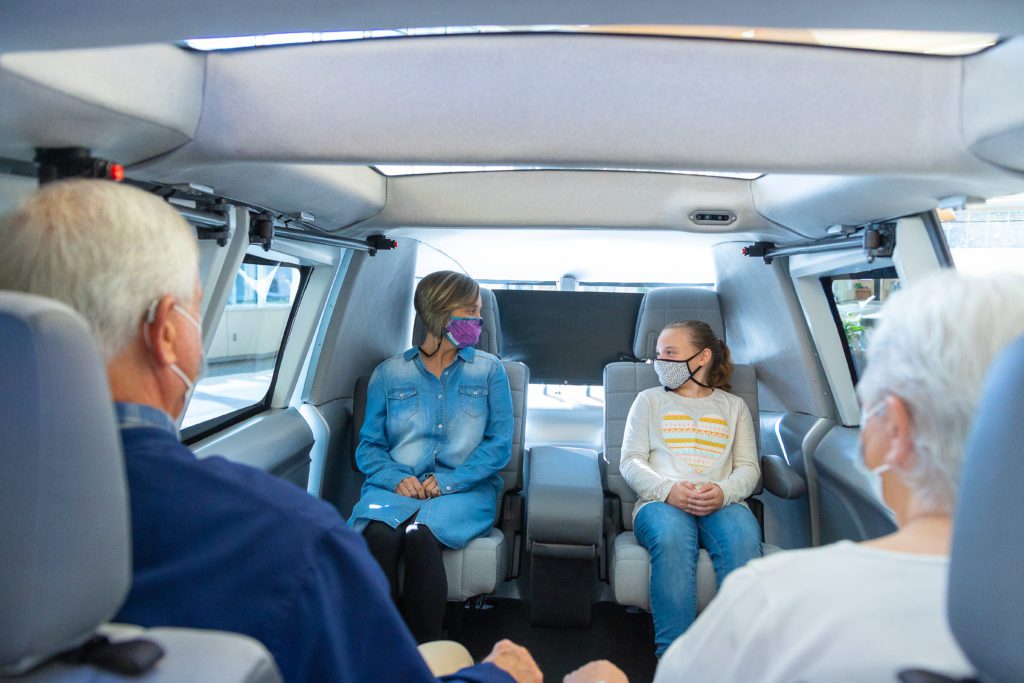

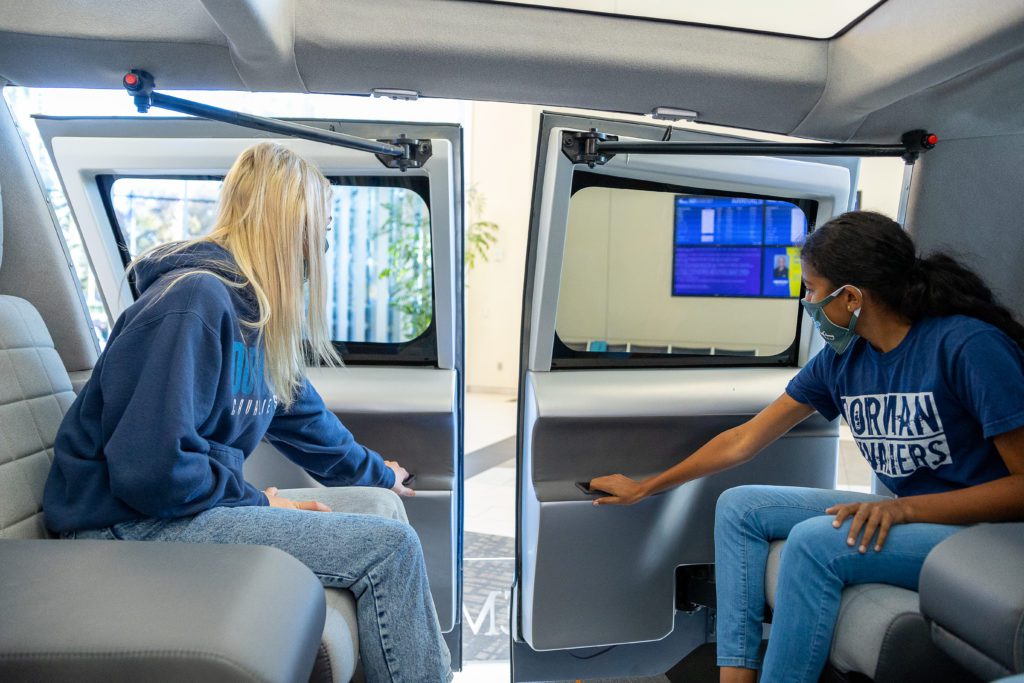
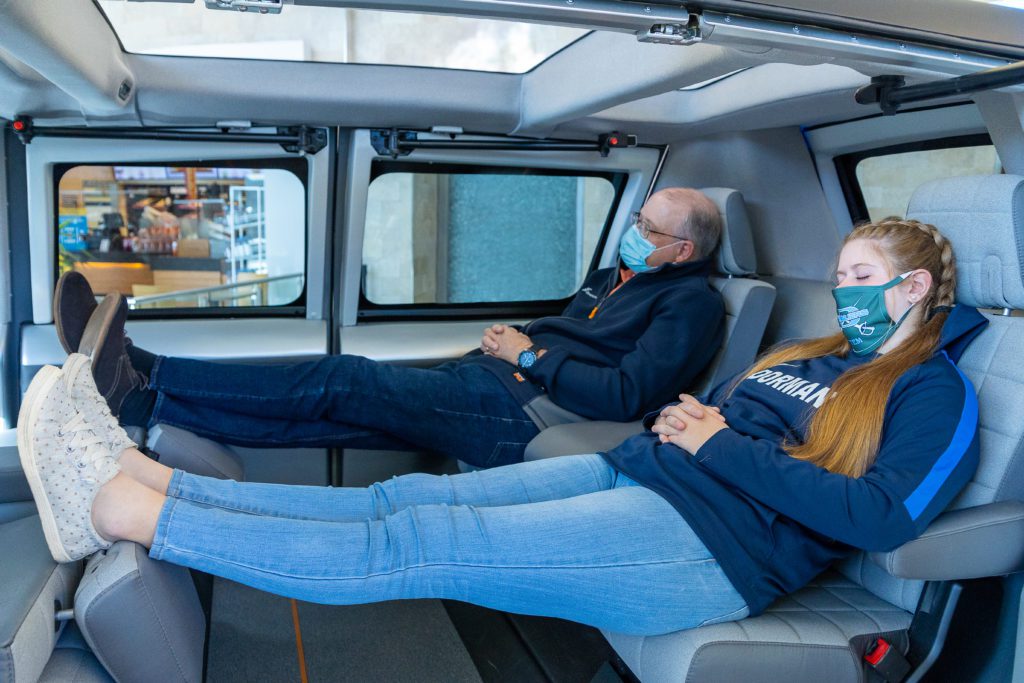
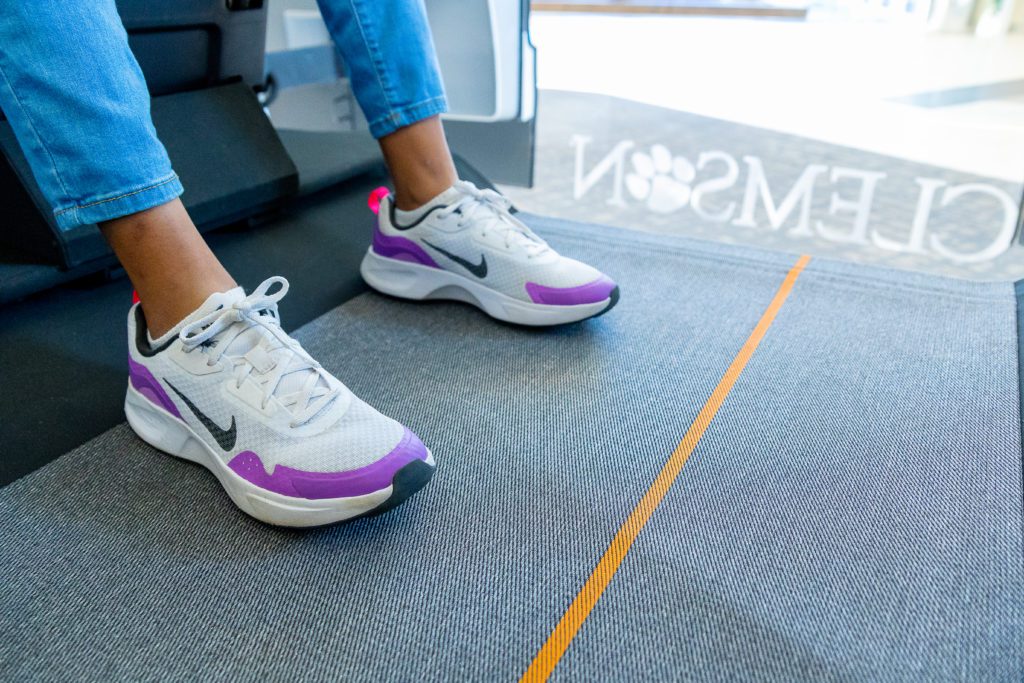
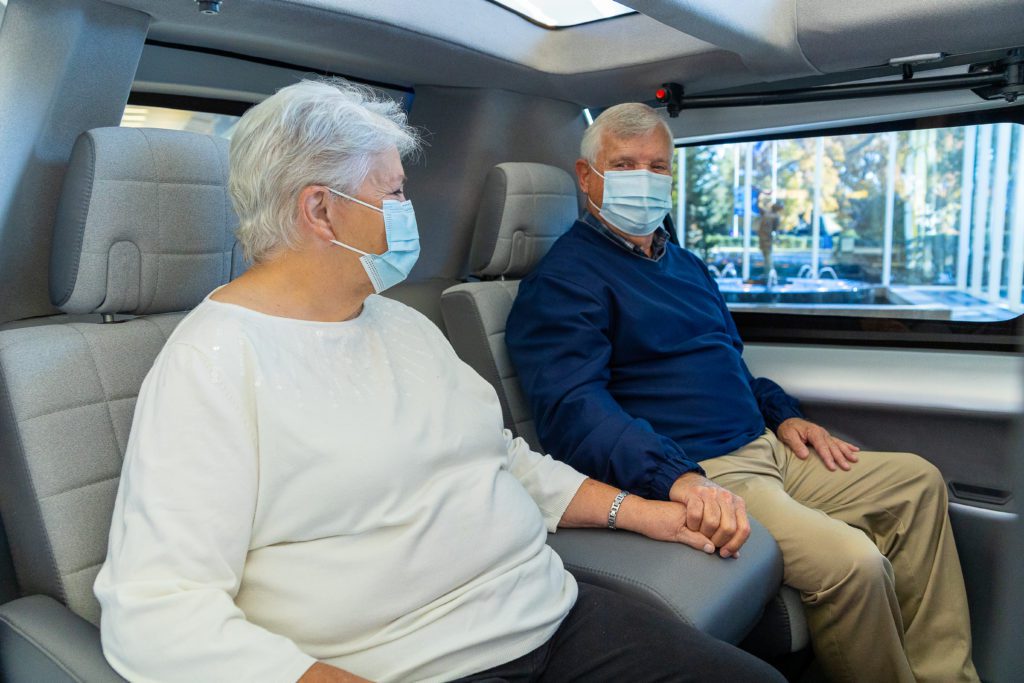
While Clemson students were responsible for designing the vehicle and creating an innovative user experience for a rider, a student and now Ford employee, Steven Lee from the College for Creative Studies (CCS) in Detroit was key to bringing the self-driving vehicle design to life and worked closely alongside the students and Ford from the exterior to interior. The initial design sketches generated by CCS of the prototype showcased a purpose-built driverless vehicle design.
Driven by partnerships
Deep Orange is a sought-after program for students because it provides them with the hands-on experience of taking a car from concept to reality. Students are free to pursue their creativity and vision for the future of the automotive industry while receiving feedback and guidance from an automaker like Ford. It is a powerful learning experience for a budding engineer. They also had a chance to work with Sage Automotive Interiors and Ford’s color material and finish team, broadening their understanding of the vehicle design process. Working with students doesn’t just help prepare them for a successful career in the industry — it also keeps Clemson’s faculty and industry partners at the forefront of cutting-edge research and creative thinking. This project also held a special significance for the team as the Ford employees advising the students were Clemson alumni from previous Deep Orange projects.
Nurturing the talent of tomorrow
Since hiring their first Clemson Deep Orange alumni, Ford has had great success bringing graduates and undergraduates from the University on board. Today, Ford employs over 50 graduates of Clemson’s Automotive Engineering program, half of which participated in the Deep Orange program. Out of the Deep Orange 10 team, five found their home at Ford following graduation. Working hand in hand with industry allows Clemson to develop the best and brightest leaders driving the mobility industry.
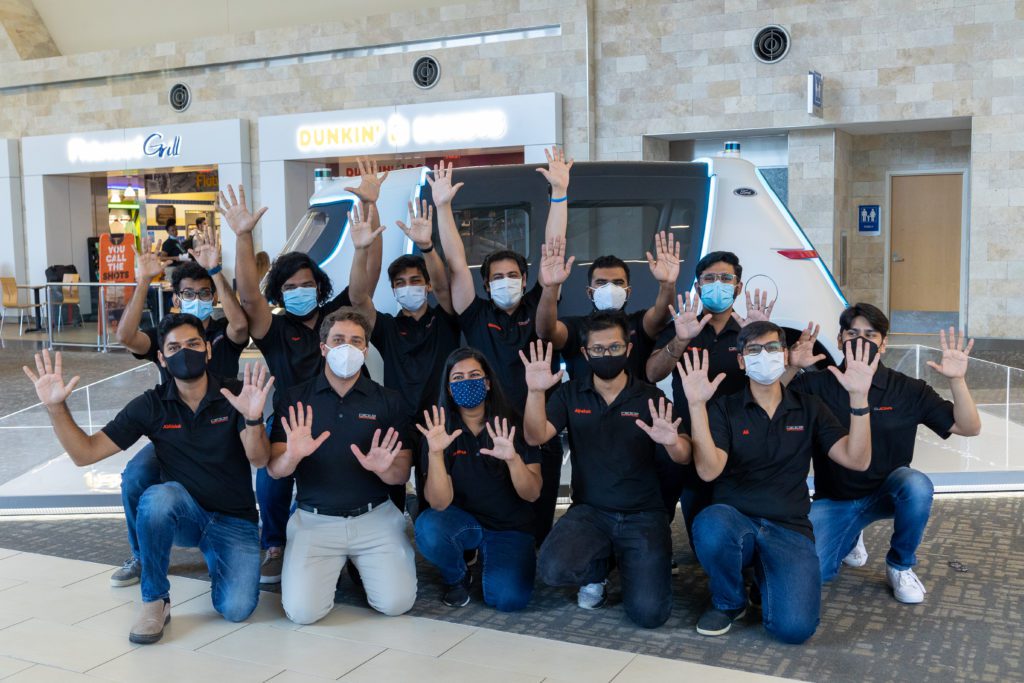
First look at the design
From their early designs to the finished prototype, these Clemson students brought new focus and passion to a real-world project. Congratulations to this outstanding cohort of engineers. We truly will see a brighter, better transportation future, because of passionate, skilled engineers like the Deep Orange 10 class.
Now on display at the Greenville-Spartanburg International Airport, if you are in the Greenville, South Carolina area you can see Clemson University’s first autonomous passenger vehicle prototype!

